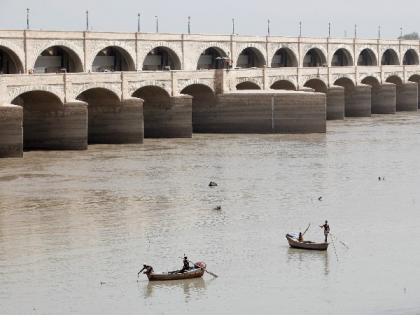Pakistan's water supplies under severe strain amid slow snow melting
By ANI | Published: April 11, 2022 12:11 AM2022-04-11T00:11:12+5:302022-04-11T00:20:02+5:30
Pakistan's National water supplies have dipped substantially low and are facing severe strain as, despite an early onset of summer in mid-March and April getting hotter than usual, the snow melting process in mountainous and hilly areas has not picked up the pace.

Pakistan's water supplies under severe strain amid slow snow melting
Pakistan's National water supplies have dipped substantially low and are facing severe strain as, despite an early onset of summer in mid-March and April getting hotter than usual, the snow melting process in mountainous and hilly areas has not picked up the pace.
Pakistan's water supply level is much below last year's levels. It is also below average supplies of the last five or 10 years. On Saturday, the country received 90,000 cusecs in all its rivers against the last 10-year average of 1,37,700 cusecs, a drop of 27.73pc.
This crisis has forced Pakistan to kick off the Kharif season with a shortage of nearly 40 per cent in both of its water-producing systems -- 30pc in Indus and 10pc in the Jhelum arm, reported Dawn.
Khalid Rana of the Indus River System Authority (Irsa), said, "The situation is more precarious in Mangla, which is hosting less than 1pc of its capacity."
Mangla Dam, on Saturday, held only 354,000 acre-feet against over seven million of its capacity. The reason behind this is Mangla Lake is mainly rain-fed and there has virtually been no rain during March.
The Met Office predicted five spells of rain, but only one took place leading to a shortage of water supplies. Rana said, "To make matters worse, 37 inches of snow fell this winter against the yearly average of 50 inches -- a drop of 26pc. Even those 37 inches seem to have fallen on higher altitudes, where the temperature needs to be more than the current 23 degrees Celsius to melt it. These trends -- less and high altitude snow and virtually no rain -- have created a crisis in the Jhelum arm," as per the newspaper.
( With inputs from ANI )
Disclaimer: This post has been auto-published from an agency feed without any modifications to the text and has not been reviewed by an editor
Open in app